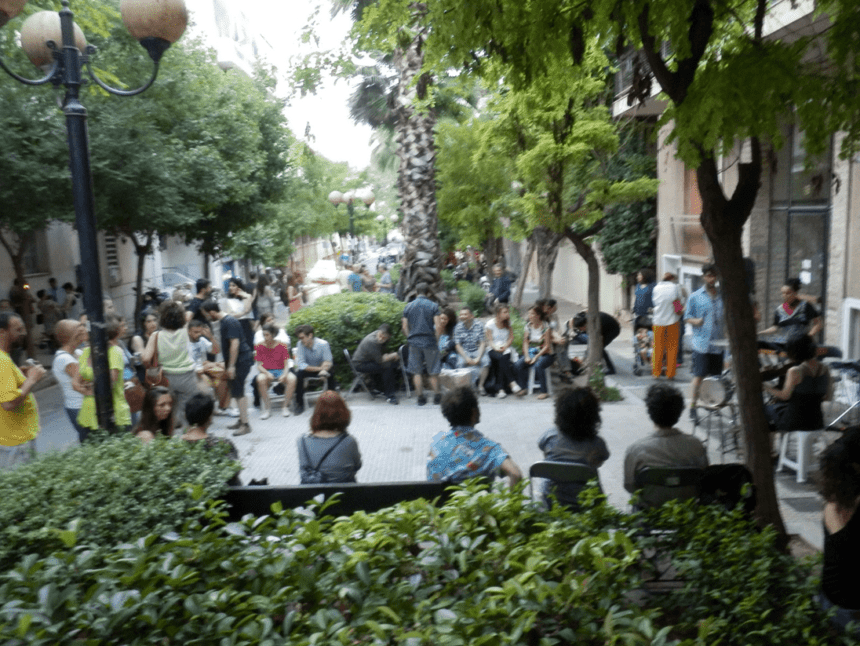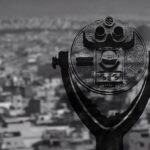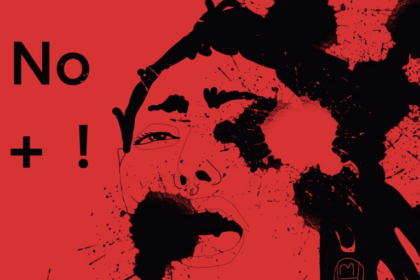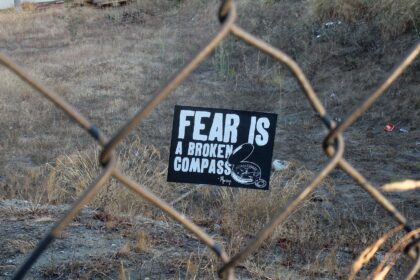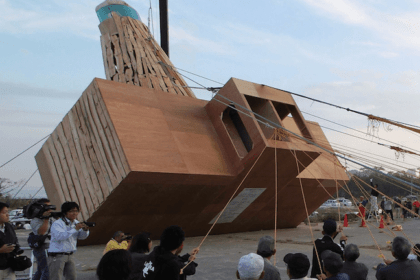Research as Art in/as Context
Elpida Rikou
This paper presents an outline of ten years of research projects situated between art and anthropology, which I have initiated, coordinated and participated in as both an artist and an anthropologist. They are listed here as an example of interdisciplinary, collaborative, socially engaged art research, that took place in Athens, Greece, between 2007 and 2017, parallel to similar trends developing internationally, with the additional trait of the systematic reference to anthropology. In fact, certain methodological and theoretical aspects of anthropology and other social sciences may become useful in amplifying art’s political potential, in general and more specifically in the context of a social and economic “crisis”, as it was the case in Athens during the decade these projects developed. Artists’ work may thus be influenced by a diversity of informed, critical, ethical and reflexive approaches to everyday “reality” as it is conceived and experienced by people who are not only artists.This resource may prove of particular interest in periods of political upheaval, extremism and despair. The reverse may also be true, i.e. reference to art practices may help to liberate a diversity of needs and ideas that seem to emerge at a collective and/or individual level inside the academy, particularly in moments of “crisis”, and which tend to remain “disciplined”, restrained by the complex network of relations between anthropology, the academy and activism.
All the above mentioned research projects benefited in this sense by the interrelations between art and anthropology. Below are noted certain of their common characteristics:
• All projects included a rather large number of participants coming mostly from anthropology and the visual arts but also from disciplines such as history and theory of art, cultural studies and other fields. The projects were initiated inside the academy but surpassed its limitations, with students and teachers having equal say on the development of the activities, which focused on different social issues. Each project enhanced both diversity and coherence, by giving form to the different personal, social and political concerns of the group members, while promoting exchanges amongst them and collaborations with other groups or individuals. Every single research project came about via a long-term, open-ended, creative and reflexive process, which kept pace with the political, social and economic developments of the decade of economic “crisis” in Greece.
• This complex, individual-cum-collective, research-cum-art making process was mostly based on participant observation, frequently including visual and audio documentation and sometimes interviews. The process was constantly stimulated by references to the literature relevant to each project’s subject matter, from the domains of contemporary art and social sciences, and by feed-back provided by all of the group members, while other individual artists or theorists, social or artistic groups were invited to contribute on specific issues throughout. Each participant was encouraged to bring in all kinds of relevant data, archives, materials, objects, photos or videos that he/she had found or made for the occasion, in order to contribute to an end product which was exhibited as a public event comprising presentations, discussions, performances, projections and other activities.
• The qualification of this kind of research as “artistic”[1] would be congruent with the above mentioned characteristics, but what is more salient is its experimental status, “in between” art and anthropology, academy and social life. It is true that the research in question here is not accompanied by a strict protocols, evaluation processes or consistent financial support. At the same time, most of these projects did benefit from the academic status of certain participants and the publications that ensued, as well as from the support of certain university departments on specific occasions and while funding was rarely assured, bibliographical references and discussions on cutting edge subjects in art and anthropology were in abundance.
In sum, all these multivalent projects were demanding of time and energy and were solely realized through the participants’ inventiveness and perseverance, sometimes at their own expenses. Nevertheless, these endeavors were also full of enjoyable, surprising and revelatory moments. Their two main aims were to explore methodological and epistemological issues between art and anthropology, on the one hand, and, on the other, to better understand, critically engage and creatively intervene in matters of personal, social and political significance.
I was fortunate enough to share the necessity to work in these two directions with a number of colleagues and students whose perspectives greatly influenced my own. Still, there is a more “private” motivation for this activity having to do with an enlarged notion of research, understood as a way of integrating art into life which I have embraced thus far in my personal trajectory. As an anthropologist and an artist, however, I consider my personal life story as a situated narrative, taking into account gender roles, economic and cultural background, local and national specificities, all of these not considered as givens but as changing over time. And although I take advantage of the comparative, critical, postcolonial perspective of anthropology, I am also aware that my main intellectual references stem from a largely European-centered history of ideas. So, even considered from this supposedly more “intimate” perspective, the specific character of the whole ten years’ endeavor that will be discussed in more detail later on in this paper is relevant to, and revelatory of, the context in which it has been formulated. Ultimately, at the heart of the matter lies the consideration of art in context, that is, of art making conceived as a situated process, but also of art as context, in other words, of personal and social life reinterpreted and reinvented as a process of art making.
At the starting point of this discussion, therefore, research is conceived as almost synonymous to art, which, in turn, stands for the example par excellence of the creative process of cultural formation of meaning in personal and social life. This is a perspective on research, art and culture that is evidently inspired and reinforced by references to the literature, that is, from contemporary art history and movements such as the Situationist International, along with the works of Henry Lefebvre, Michel Foucault or Michel de Certeau to more recent contributions to social theory and political art, combined with the historical writings of Boas, Levi-Strauss, Geertz and, most importantly, the cultural critic turn in American anthropology of the 1980s brought about by James Clifford, George Marcus, Fred Myers and other writers. This perspective is also informed by the material culture studies of the 1990s, with Alfred Gell as one of the main references along with Timothy Ingold and many other contributors to the understanding of art considered from an anthropological perspective, or rather from a standpoint “between” art and anthropology, adopted most clearly by Arnd Schneider and Christopher Wright.
The marked absence of bibliographical references on this subject matter in the Greek language became obvious to me in 2007, when I started teaching a course on Anthropology and Art both at the Department of Social Anthropology at Panteion University and at the then-newly established Department of Theory and History of Art at the Athens School of Fine Arts. The edited volume on Anthropology and Contemporary Art,[2] comprising translated texts by Marcus, Clifford, Myers, Gell and others, came out quite at the same time as Eleana Yalouri’s edited volume on material culture.[3] Both volumes are conceived in such a way as to provide Greek students, artists, anthropologists and everyone else interested in contemporary cultural and artistic production with accessible, important bibliographical references. Meanwhile, a number of publications in Greek and English documenting and commenting on the projects mentioned above hopefully represent a contribution from Greece to the corpus of international research on art and anthropology [4]
A non-exhaustive list of these projects follows, organized according to whether research seems primarily linked to art making, to the critique of art institutions or to art education. Actually, these are inseparable dimensions of the research-cum-art making activity presented here, as it becomes evident with the final project mentioned below (TWIXTlab). Comparable to a “real life experiment”, this project focuses on the issue of art implicated in social relations.[5]
A. Research as Art Making
The project entitled “Fonés (Voices)” (2011-2014) and the workshop on “Axia (Value)” (Athens Biennale 4-Agora, Sept.-Dec.2013) were conceived primarily as a means of expressing personal and collective distress and criticism during the difficult political and economic circumstances in Greece at that time, when the risk of losing one’s voice became imminent and the need to reevaluate what was really worthwhile in our lives appeared as urgent. At the same time, working on voice from the different perspectives of visual and sound artists, musicians, anthropologists and cultural studies academics specialized on sound or even activists in psychiatry presented a real challenge from a methodological viewpoint, whereas having a chance to present an all round knowledge on how value is created in society and why evaluation processes constantly infiltrate our lives proved empowering.
On each occasion, during the months or years of regular group gatherings, discussions and networking, some of us have had the opportunity to develop individual art projects on voice and value respectively. My personal contribution as an artist to the first one was to give visibility to the ways we address the “other” and to the second was to make evident the paradoxes that are inherent in the construction of our professional life narratives, that is, our CVs. [6]
We have also had the chance to publicly present our work in different settings and on different occasions (the Embros theater, CAMP exhibition space, the Athens Biennale and others), thus learning a great deal about how to organize events and exhibitions, particularly in the case of collaborative projects.
On the whole, this way of working proved quite a breakthrough to our understanding of the research process, particularly in anthropology. Solitary, non-interventional, long-term fieldwork certainly remains a necessity on many occasions, but it became clear to us that this not the only option one has nowadays (depending of course on the research’s subject matter and other factors). Opening up to art practices permits experimentation and the mingling of theoretical and methodological concerns, while the gradual collective construction of a research process may prove timelier than an a priori protocol, particularly if one questions the utility of a research solely addressed to the academy and decides to tread on the (supposedly) dangerous territory of activism.
Collaboration between artists and anthropologists isn’t always a given, since education, aims and even ethics differ, but the divergences or conflicts that may arise prove particularly insightful in helping us challenge on the stereotypes shared by art or anthropology as professions, stereotypes that go unnoticed and yet greatly influencing contemporary cultural production. Overall, artistic practices and claims to artistic freedom remain assets for research that can, then, be reevaluated as a work of art per se. The question, though, of when a research process can be considered as “art” is more related to how art institutions think (and act)[ 7] nowadays, which is why research projects of the kind presented here also need to address the functioning of these very institutions if a ground “in between” art and anthropology is to be rightfully claimed.
B. Research as the Critique of Art Institutions
In 2009, from June to October, a group of four (two students of anthropology, one art student and myself as their teacher) conducted research based on participant observation at the 2nd Athens Biennale 2009 entitled “Heaven” and more particularly on the part of the show named “Heaven Live,” curated by the artists Dimitris Papaioannou and Zafos Xagoraris and situated in the Athenian suburb of Paleo Faliro, right on the beach. The show mainly consisted of temporary installations and performances, inviting the spectators and inhabitants of this maritime vicinity to take active part in the invention of new uses of public spaces.[8]
The aim of our research was to understand, as “insiders,” how artists conceived their site-specific work on this occasion and how inhabitants reacted to their artistic initiatives. Participant observation was possible since two of our group members became part of the volunteers working for Heaven Live and I also had access to the preparations of the show while I was invited as a participant at a public discussion. The results of our research were documented by an extensive collective diary, an archive of photos, interviews and other relevant material, as well as an artwork in the form of an installation that the artist of our group made for the occasion and presented later on to an anthropology students’ conference (see below).
The scope of this research was fairly limited from the start and its purpose was mainly educational: we were grateful for the chance that was presented to us to become familiar with contemporary art in a social context. Our group, however, slowly developed a critical attitude toward most of the art projects, particularly in cases when we thought we detected their initiators’ indifference to this very same social context they were supposed to take into account in order to produce site-specific public art.
Several years later, the influential exhibition documenta 14 was partly moved to Athens to “learn” in situ from a city in crisis. The previous experience we gained in studying art projects and in particular the Athens Biennial, discussed above, helped but now the challenge was of quite another caliber. In 2015 an international research program entitled “Learning from documenta: The Athens Arts Observatory” was organized and co-coordinated by myself and Eleana Yalouri. The program constituted an extensive research project, based on participant observation, artistic interventions, public discussions, the publication of a fanzine, two workshops—one closed to the public and one running in parallel with the program’s closing conference event in autumn 2017—while a book publication in English is currently in preparation.
A paper dedicated to this project is part of this special issue, so it is unnecessary to develop the subject further here. Nevertheless, I would like to add that from my own standpoint, research on documenta 14 “Learning from Athens” offered an important insight into the functioning of art institutions as well as into the relations between art and anthropology. The research process was demanding in itself, for many reasons, whereas the results enhanced my opinion that institutional critique is still useful and in need of reinvention nowadays. More questions were posed than answered, such as: is it possible to productively criticize the impasses that the gigantism and the international networking of the art institutions, along with the “biennalization” of the art world, have created? What are the possibilities of organizing the art making process in different terms, at least at a micro-level? What can we learn from documenta about the so-called “educational turn” in the arts, the community engaged projects and all other artistic initiatives that might eventually prove useful in the materialization of a different proposal for art production?
C. Research as Art Education
Projects between art and anthropology were part of the assignments in the course on Anthropology and Contemporary Art, bringing together students from the two departments of the Athens School of Fine Arts (the Department of Visual Arts and the Department of Theory and History of Art). From 2007 to 20011 a selection of these projects were presented on three occasions at the students’ conferences of the “Border Crossings Network”.[9] The projects focused on different subject matters that were of interest to the students; they were all based on fieldwork and took their final form through our collaboration in order to be presented at the conference in a mixed form of art installations accompanied by oral presentations. Among the few projects presented at the the “Border Crossings” conference at Zadar was the installation made by the art student inspired by her experience at “Heaven Live.” The second time round, a rather large number of art students participated with work that was mostly site specific (the conference took place at a university department in Komotini, a city in northern Greece). On the third occasion, the majority of students came from the Theory and History Department, and all their projects commented on life in the squares of Athens (a timely choice, since the squares regained their political significance during the “crisis”).
The inventiveness we all had to demonstrate in working together transformed the teacher-students hierarchical relation to a process of mutual education on collaborative research practices.
Because education is a fundamental concern of mine during the diverse projects I have been developing in collaboration with colleagues, students and graduates, the so-called “educational turn” in the arts [10] has been quite encouraging, while documenta 14’s emphasis on learning and education, or rather “aneducation,” came as no surprise. Beginning in 2015 I started proposing a number of workshops in search of the creative potential of social relations in the context of education. Jacques Rancière’s book The Ignorant Schoolmaster [11] inspired the first one, in which a number of invited artists and theorists worked together to better understand the text and develop certain of its ideas via their own practice in various media. The second workshop is still in development as a series of gatherings proposed by “amateurs” in order to elaborate and present their own methods of research on different subject matters that interest them.
D. Research as “Real Life Experiment“
In 2014, I initiated a long-term project entitled “TWIXTlab” that functions to this day as an art-research laboratory/collective cultural space/non-profit organization, located in an Athenian neighborhood (Pangrati) and serving as a framework for the production of new projects situated “in between” (twixt) art, anthropology and the everyday. [12]
The idea of initiating a project such as TWIXTlab arose from two concerns: The Greek university system at that time, didn’t seem to satisfy the conditions necessary for a long-term exploration of the field in between art and anthropology, due to the precariousness of employment and the lack of funding for and interest in such a project. Therefore, one needed a private initiative to continue working on this issue, especially when it had become evident that this was not simply a matter between academics, but one that had political overtones. How to secure a public forum for the Voices of those who were losing their right to be heard (our own amongst them) and how to better understand the ways Value was created in cultural production (in which we were implicated ourselves), were to my mind important and timely questions, which had already been posed and treated in an informed manner by the two projects previously mentioned (Voices and Value), but not yet thoroughly debated.
How can we understand the systematic implication of artistic practice in social relations? And what role can research and education play in exploring this interrelationship? This question needs to be investigated concretely, in the context of everyday social life, beyond the protected, disciplined, intellectual realms of the academy and those of the art world with its own, more obscure, codes of conduct (that we only started to grasp during the “Learning from documenta” project).
To this day, TWIXTlab functions as a collective enterprise, prolific in proposing projects, workshops, lectures and presentations of different sorts but also facing many difficulties, especially since it became a non-profit organization in 2015, struggling with legal and economic issues in an effort to achieve sustainability. Economic sustainability from the scope of cultural production becomes a matter that we need to better understand and TWIXTlab has already held a workshop on this subject. It is highly debatable, though, if the means for accumulating knowledge and enhancing self-reflexivity that we have acquired from our practice in art and anthropology are enough to help us resolve issues of surviving financially, in ways that are consistent with our ideas and needs. The presence of documenta 14 in Athens has also been very informative from this point of view. Long-term projects such as Project Row Houses, developed by the Texas-based artist Rick Lowe, serve as examples for us to learn more about community engaged art in situ and to define our own perspective vis-à-vis this or other comparable initiatives worldwide.
To Conclude: Research as Art in/as Life
Is it possible to redefine notions such as “research,” “art” and even “anthropology” in ways that may be theoretically adequate and personally fulfilling, but which remain unacceptable in specific social contexts, both in the academy and the art world? After acting as a “go between” for two different fields of practice for a long time, one comes to realize that borders are contingent but powerful. Questioning stereotypes comes at a price, which is higher when societies traverse moments of crisis. In these cases, the scope of ideas is measured in real life terms. But although ideas may not help solve problems of subsistence they can motivate us to go beyond the expected and give form to an art of living (in Foucault’s sense) that is not only a “petit-bourgeois” privilege but a consistent personal-cum-political stance.
My research experience during my trajectory in the humanities (sociology, social psychology, psychoanalysis, anthropology) revolves around subjects of “common” interest, such as death, illness and health, the body, the city, the everyday. Art came into the picture last as a means to give sense to the real. While I follow Alfred Gell’s words of caution against art as a religious belief,[13] I admit that a certain form of belief in human creativity when facing the unknown is a necessity—and I think he would also agree! I would claim these ten years of research in between art and anthropology as the artwork I produced as an artist up to now, but I am aware that this definition won’t be easily accepted in an institutional context, as I am also fully aware of the constraints posed by the global system of economy and politics in our everyday lives; and I would argue that these two aspects are related. I remain convinced, however, that informed and creative arguments based on specific examples have the power to undermine stereotypes and thus, in my opinion, art may gain its full political potential under the condition of developing as a situated research practice.
Elpida Rikou has studied sociology (Panteion University, Athens), anthropology (D.E.A., Université Paris V-Sorbonne), social psychology (D.E.A. and Ph.D, Ecole des Hautes Etudes en Sciences Sociales, Paris) and visual arts (Athens School of Fine Arts). She has taught at different universities (Universities of Crete, Thessaly, Athens and Panteion University) since 1998. She has also taught Anthropology and Contemporary Art in the Department of Theory and History of Art of the Athens School of Fine Arts from 2007 to 2017 and from 2011 to 2013 in the Postgraduate Program (Master in Fine Arts) of the Department of Visual Arts of the same School. She is the editor of Anthropology and Contemporary Art (a collection of texts of British and American anthropologists and art theorists published in Greek by Alexandria in 2013) for which she has written the introduction and of the translation in Greek of Marc Augé’s book Pour une anthropologie des mondes contemporains (published by Alexandria in 1999), for which she has also written the introduction. She has co-edited with E. Yalouri and A. Lampropoulos a volume with the work of artists and theorists on value (Αξία) and with P. Panopoulos a volume with the work of artists and anthropologists on voice (Φωνές/Fones) as well as the translation in Greek of Alfred Gell’s book Art and Agency. She has published articles in scientific periodicals, edited collections, art catalogues and newspapers. She is the coordinator of several art projects with an interdisciplinary character (i.e. TWIXTLab, the international research project Learning from documenta with E. Yalouri, Value/4th Athens Biennal, project “Fonés”, etc.) in which she is also a participant as an anthropologist and visual artist.
Notes
[1] Concerning artistic research see Artistic Research: Theories, Methods and Practices, edited by Mikka Hannula, Juha Suoranta and Tere Vadén (Helsinki/Gothenburg: Academy of Fine Arts / University of Gothenburg, 2005). Graeme Sullivan, Art Practice as Research: Inquiry in Visual Arts, (Thousand. Oaks, CA: CA: Sage Publications, 2010)
[2] Anthropologia kai Sychroni Techni (Anthropology and Contemporary Art), edited by Elpida Rikou (Athens: Alexandria Eeditions, 2013)
[3] Ylikos Politismos: I Anthropologia stin Chora ton Pragmaton, edited by Eleana Yalouri (Material Culture: Anthropology at the Thingland), (Athens: Alexandria editions, 2012)
[4] Publications on these projects include: Axia (Value), edited by Eleana Yalouri, Apostolos Lampropoulos and Elpida Rikou (Athens: Nissos Publisher, forthcoming), Fonés (Voices), edited by Panagiotis Panopoulos and Elpida Rikou (Athens: Nissos Publisher, 2016) and Elpida Rikou and Alexios Tsingas, “Renegotiating the Boundaries between the Everyday and Art on the Occasion of the Artistic Interventions of the Second Biennale of Athens (“Heaven Live” 2009).” Greek Semiotic Society and Department of French Studies and Contemporary Languages, Conference, “Το καθημερινό/ Le Quotidien / The Everyday”. University of Cyprus, Lefkosia, November 5-7, 2010
[5] For bibliography informed by contemporary issues of art implicated in social relations, see Grant Kester, The One and the Many: Contemporary Collaborative Art in a Global Context (Durham: Duke University Press, 2011)
[6] The project “Esy/You” is published in the volume Fonés (Voices) and the project “CV blues” is to be published in the volume Axia (Value) (see note 4)
[7] How Institutions Think: Between Contemporary Art and Curatorial Discourse, edited by Paul O’Neill, Lucy Steeds and Mick Wilson (Cambridge MA: MIT Press, 2017); Mary Douglas, How Institutions Think (New York: Syracuse University Press, 1986).
[8]http://www.dimitrispapaioannou.com/en/profile/60-productions/2009-heaven-live-ab2/421-heaven-live-ab2 (accessed: 2/4/ 2018)
[9] https://www.border-crossings.eu/student-conferences (accessed: 30/4/2018).
[10] Concerning the educational turn in the arts, see Education: Documents of Contemporary Art, edited by Felicity Allen, (London/Cambridge, MA: Whitechapel Gallery and MIT Press, 2011) and Claire Bishop’s discussion of pedagogic projects in Artificial Hells: Participatory Art and the Politics of Spectatorship (London/New York: Verso, 2012)
[11] Jacques Rancière, The Ignorant Schoolmaster: Five Lessons in Intellectual Emancipation (Stanford: Stanford University Press, 1991)
[12] http://twixtlab.wordpress.com/
[13] Alfred Gell, “The Technology of Enchantment and the Enchantment of Technology,” in Alfred Gell and Eric Hirsch, The Art of Anthropology: Essays and Diagrams (Oxford: Berg, 2006)

